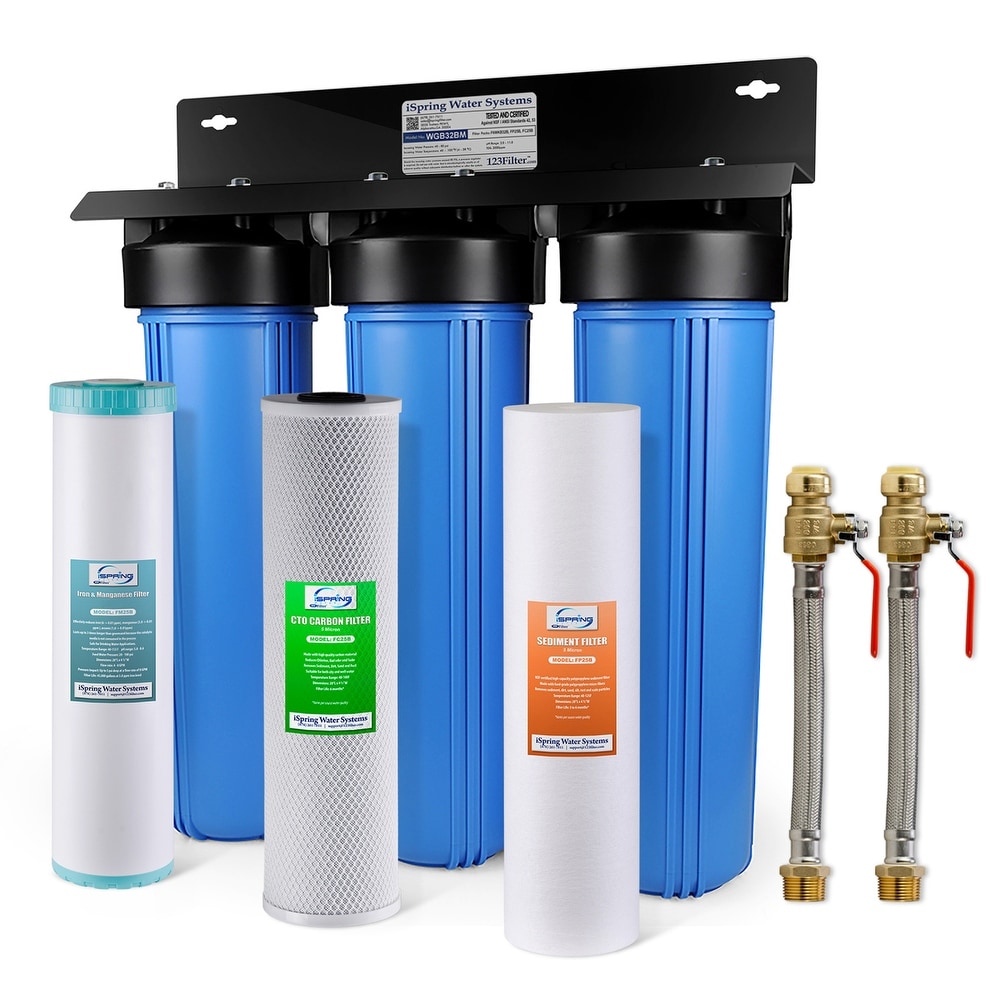Entire Dwelling Water Filtration Options
Entire Dwelling Water Filtration Options
Blog Article
Just how do you actually feel in relation to Choosing Home Water Filters & Other Water Treatment Systems?

Entire residence water filters are the perfect choice for individuals that want having a home that offers clean, drinkable water. Along with offering high quality alcohol consumption water throughout your home, a whole house water filter additionally gives advantages such as eliminating impurities that create spotting in water that is used to clean meals. Unfiltered water can also cause trouble such as corroding plumbing as well as appliances, messing up clothing that is cleaned as well as stain sinks or showers. Although entire home water filters are normally made use of in property homes, they can also be a reliable choice for apartments or workplaces.
Initially, it may appear that whole residence water filters would certainly be incredibly pricey when compared to various other filter choices, but they are in fact an extremely cost-effective alternative for water filtration. The rate range of these water filters is big, beginning at 2 hundred dollars and also costing as high as one thousand dollars. The rate of the filters depends on their size, material as well as life expectancy. This might look like a very high rate, yet when compared with other filter options, it is in fact extremely economical because of the amount of filtering that it offers.
Entire home water filters detoxify water in the exact same fashion that filters, such as kitchen counter or under sink filters, do. The distinction is that it calls for only one filter, which is connected to the major water source, rather than requiring several water filters to be affixed to different tools. As with the other filters, whole residence water filters purify tap water forcibly it through a number of various stages of filtering. Among the stages is carbon filtration. Carbon is an efficient method of filtering system water since it is permeable and has the capability to get rid of tiny and large impurities. Carbon is essential in eliminating unstable natural carbon compounds, which in some cases can trigger significant damage to the liver, kidney or main nerves. Carbon also eliminates hazardous substances such as pesticides, commercial solvents and also insecticides.
An additional essential step of the filtration process involves a procedure such as ionization or micron purification. This action gets rid of thousands of impurities located in faucet water, and also changes the water to terrific sampling, healthy alcohol consumption water. As mentioned earlier, the primary benefit of whole home water filters are that they offer filtered water throughout your home with using just one filter.
One more advantage of whole residence water filters is the lengthy lifetime that they use. Much of these filters last between fifty as well as one hundred thousand gallons of water. For many, the main disadvantage of entire residence filters is the greater than typical price. Although these filters are very cost effective, they do need a large investment in advance. Entire house water filters can also need a considerable amount work to set up.
How to Remove Iron Bacteria from Well Water
If your drinking water comes from a private well, you will likely experience issues with iron in your water. These issues can range from poor-tasting coffee to bright orange streaks in toilets and bathtubs. However, there’s an equally familiar but less understood problem linked to iron contamination: iron bacteria, also known as “iron-eating” or “iron-oxidizing” bacteria.
Iron is one of the most abundant minerals in the earth’s crust. As a result, elevated levels of iron are usually widespread in the groundwater that serves wells, often fostering the growth of iron bacteria in well water. These organisms can combine oxygen with iron, manganese, or other nutrients in the water to form a swampy sludge containing rust deposits, bacterial cells, and other organic and inorganic matter. This slimy residue then sticks the bacteria to pipes, pumps, plumbing fixtures, and appliances, causing clogging, foul tastes and odors, corroded pipes and plumbing fixtures, etc.
Well-water systems used infrequently or intermittently are typically more prone to iron bacteria problems. To make matters worse, removing these organisms from your water can be complicated, which is why we recommend taking steps to prevent them from forming in your well in the first place. Luckily, this article explains a highly effective way to remove iron bacteria from well water. Let’s start by discussing what iron bacteria are and how they get into well water.
Signs of Iron Bacteria in Water
If your household water supply is contaminated with iron bacteria, you might notice several unappealing signs that may indicate iron bacteria presence. These signs may include:
Stains and deposits on plumbing fixtures, pipes, and appliances
One of the most common indicators of iron bacteria in well water is stains and deposits on plumbing fixtures, pipes, and appliances. Water containing these organisms will leave rust-colored slime stains and deposits in sinks and toilets and inside well casings. You’ll also notice stains on fixtures, tableware, laundry, and various surfaces, that keep coming back no matter your cleaning method or efforts. These stains can be grey, yellow, or brown but are often a reddish-orange rust-like color.
Discoloration
Water containing iron bacteria can have a yellow, red, or orange hue. Further, visible deposits that have a clumpy or slimy consistency are very likely to have been caused by the presence of iron bacteria. Iron bacteria deposits are widespread in toilet tanks. In many cases, the deposits will take the form of a slimy coating along the walls of the tank. If the bacteria have been in the water for a lengthy period, the deposits could float in the water.
Oily sheen on the water surface
A quick and easy way to check for the presence of iron and other slimy-producing bacteria is to look in the water closet tank of your toilet. If you see an oily sheen on the surface of the water and can feel a slimy residue on the inside of the tank, slime-producing bacteria are likely present in your water system. If you use disinfectant in your tank, evidence of these conditions might not be so apparent.
https://www.springwellwater.com/how-to-remove-iron-bacteria-from-well-water/

Do you enjoy reading up on Choosing Home Water Filters & Other Water Treatment Systems? Post a comment down the page. We will be delighted to see your insights about this blog. In hopes that you visit us again later on. If you please take a moment to promote this entry if you appreciated it. We value reading our article about What is a Whole House Water Filter and How Does It Work?.
Article Report this page